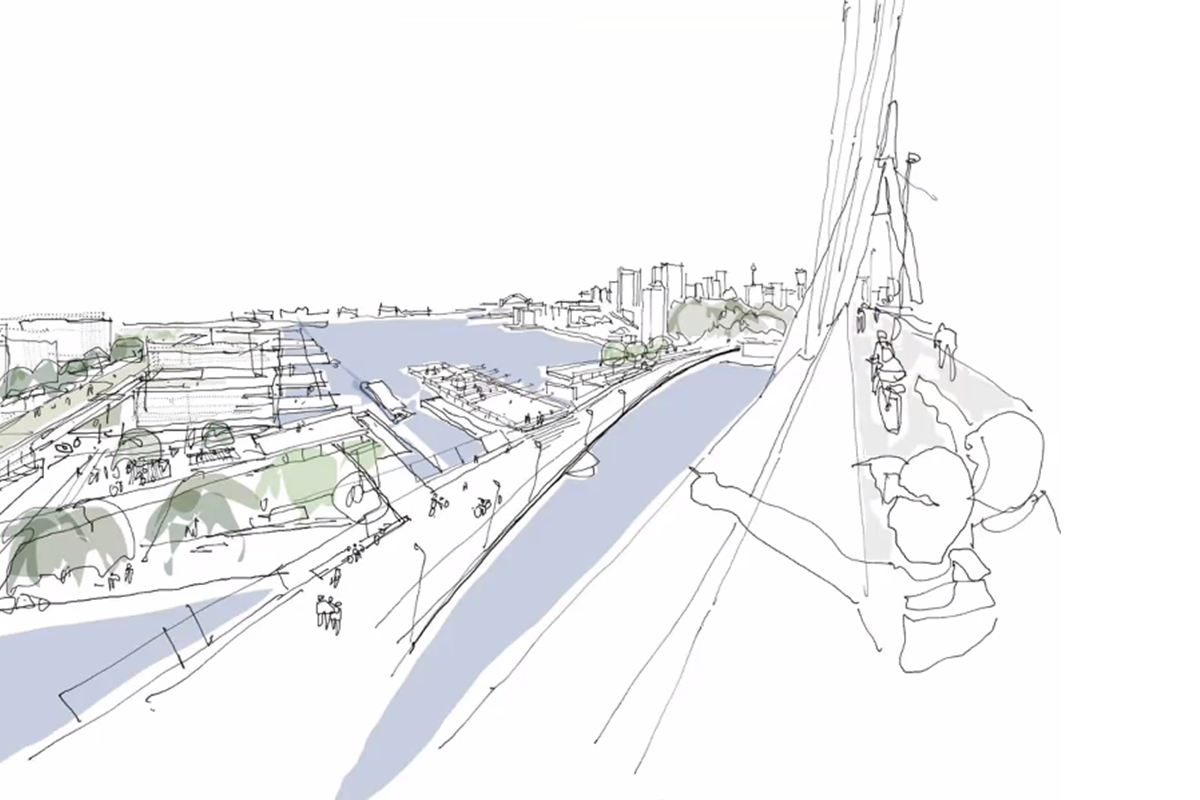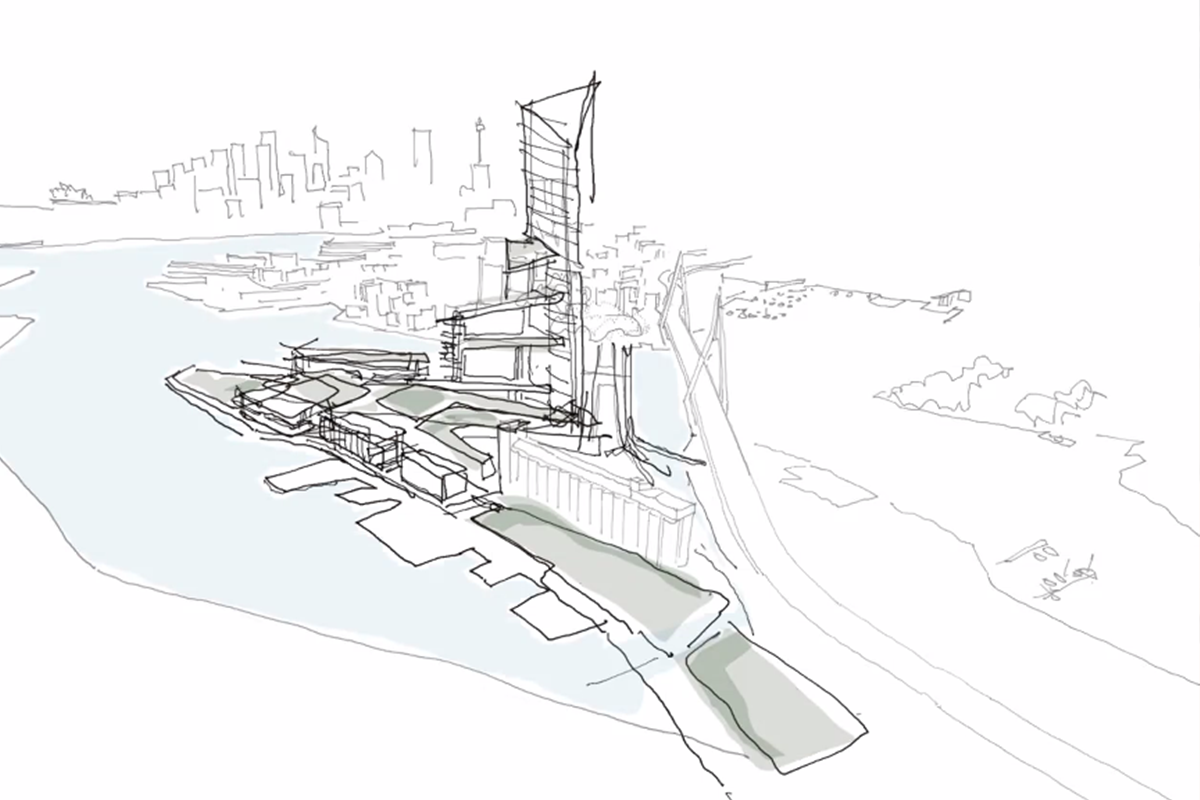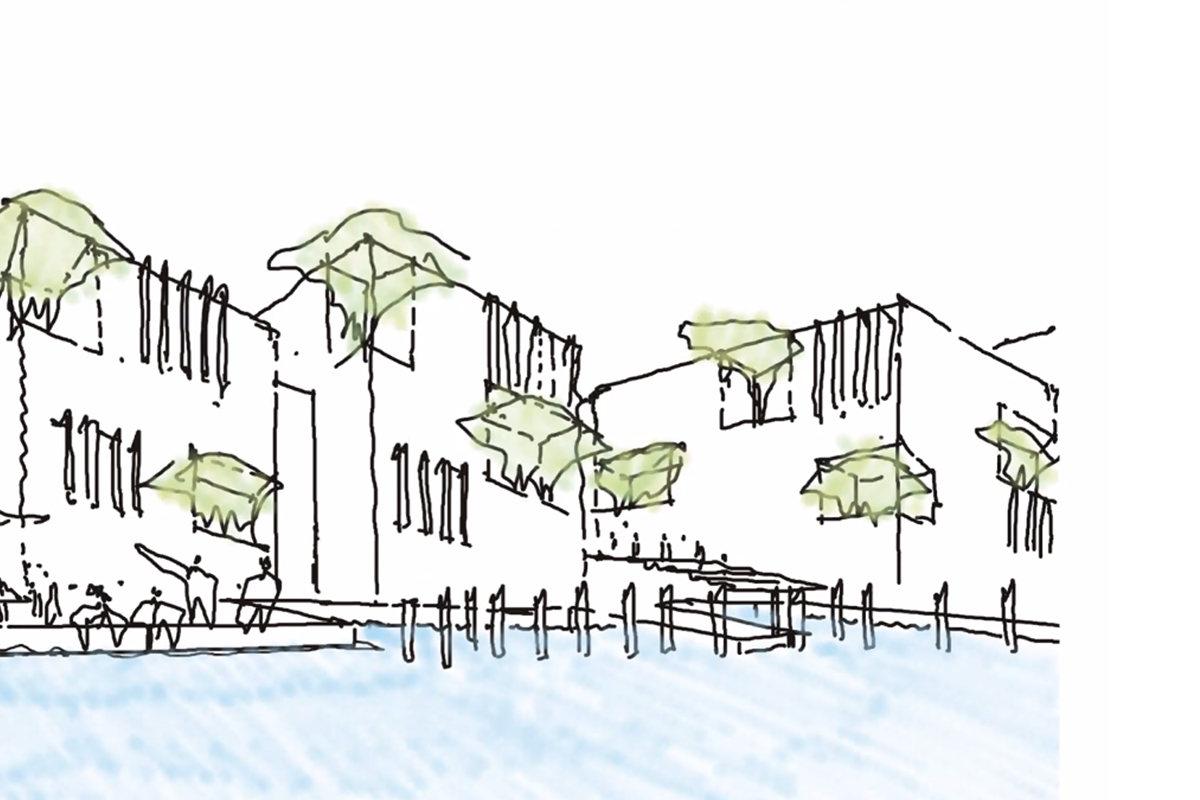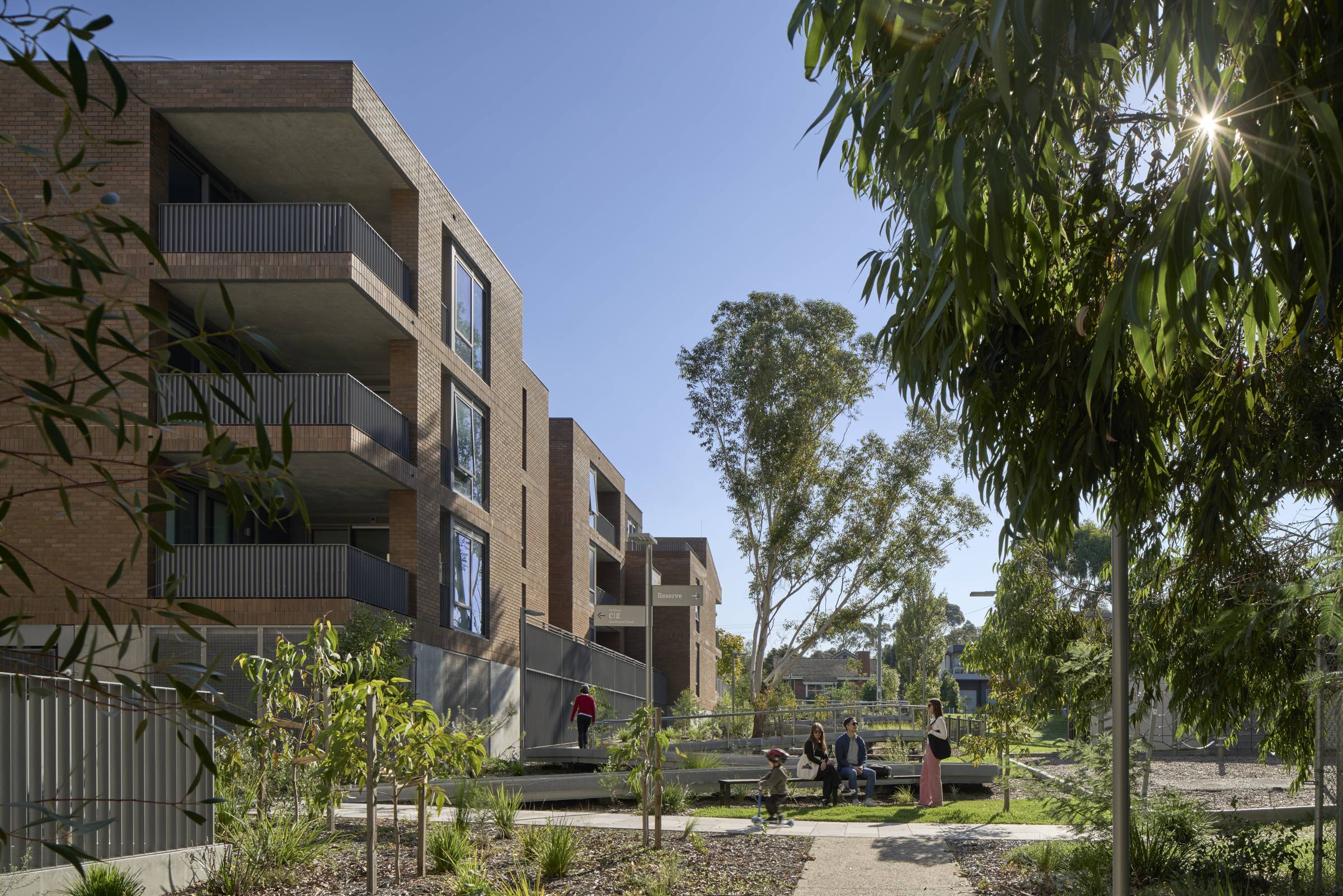Photographed: Michael Mossman, Lecturer & Researcher at the University of Sydney School of Architecture Design and Planning, and Christian Hampson, CEO of Yerrabingin.
Photo by Tom Evangelidis
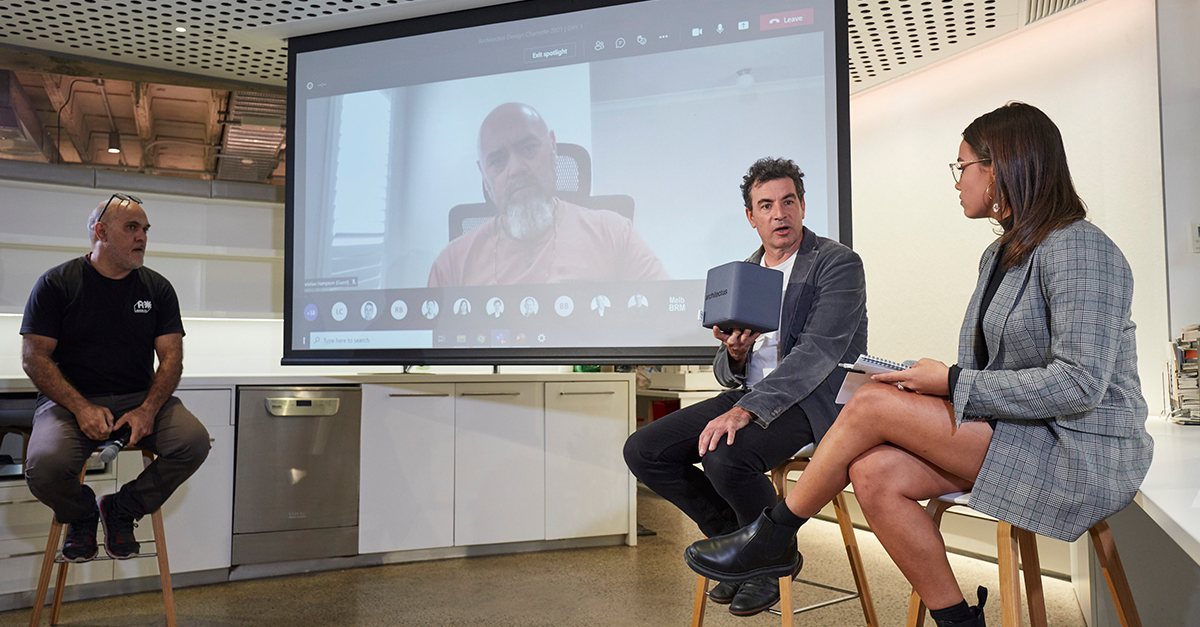
The Architectus Sustainability Framework acknowledges ongoing First Nations cultural heritage and the ways in which local communities and ecologies have responded to change over time. It was important that we incorporated shared histories of cultural landscape and that Indigenous ways of knowing, ways of being, and ways of doing were respected as we look to the future of the Bays West precinct.
The following sites were investigated during the Design Charrette, and our Team Leaders were asked how Listening to Country resonated with the design process:

Site 1: White Bay
“The essence of our takeaway from Theri was on collaboration and sustainability. Working in a collaborative way was important. Listening to different people’s opinions and thoughts, considering multiple opportunities and balancing it all.
We recognise that the past is signified through the concrete Power Station. We want to reintroduce that crumbled past and combine it towards the future project to reconcile the different times. We propose a rehabilitation of the site with the landscape creating more sustainable native habitats, wetlands, coves, flora and fauna.”
–Tany Tan, Sydney, Team 2 Leader
Site 2: Glebe Island
“The concept of our design narrative was ‘take, take, give’. The site had an extensive history of taking from Country: the land title, the natural topology, primary resources and habitat. We envisage a new precinct that re-generates these natural resources and re-establishes a lost connection back to the water’s edge, both as a meeting place for the people and a source of closed-loop food production.”
–Peter Grealy, Brisbane, Team 3 Leader
“We identified that water is particularly significant to Aboriginal and Torres Strait Islander cultural identities – with people characterised, for example, as Saltwater people, Freshwater people or Bitterwater people. Glebe Island sits at the confluence of all three waters and was known as a place to gather, celebrate culture and perform ceremonies.
The shoreline/edge became an important condition for us to study. Our design attempts to reconnect with Country through a ‘pealing back’ gesture of the harsh concrete edge, reinstating natural ecosystems in its place.”
–Sean Dervan, Brisbane, Team 4 Leader
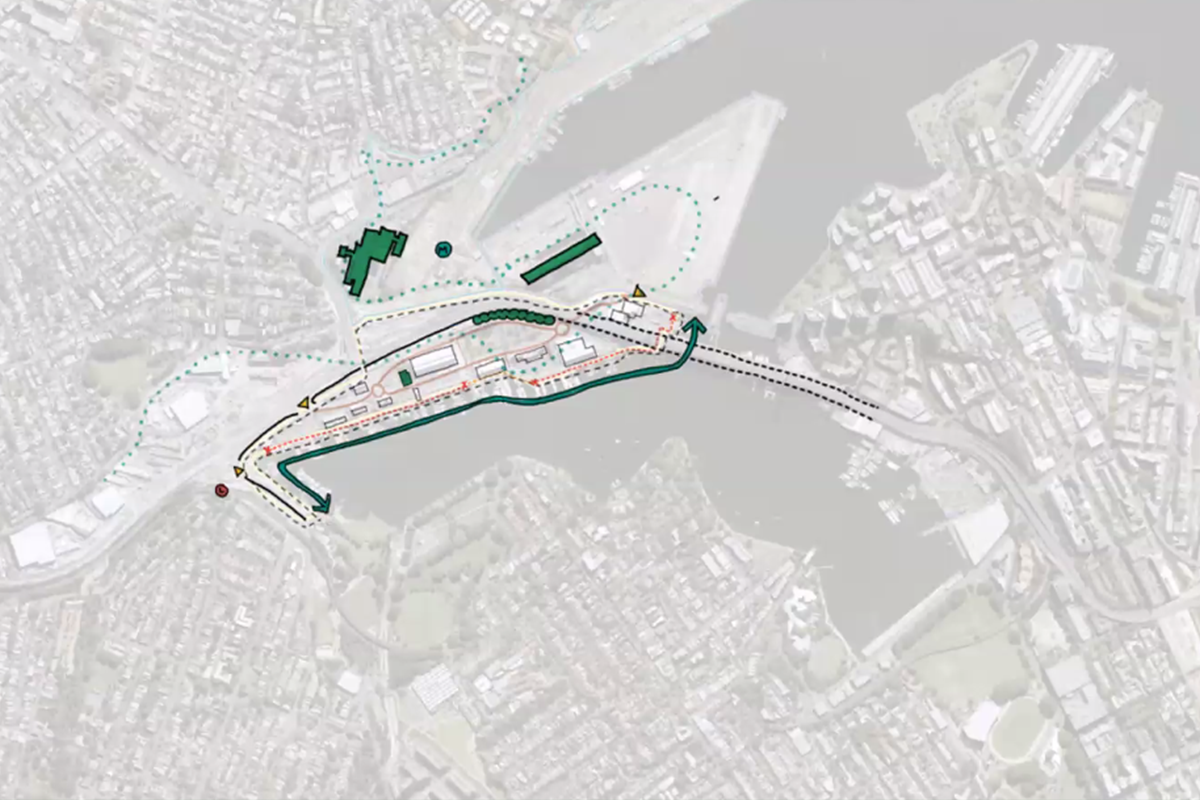
Site 3: Rozelle Bay
This scheme acknowledges the Freshwater and Saltwater stories and how these narratives connected communities. To borrow from Shannon Foster – D’harawal Saltwater Knowledge Keeper, “The stretch of Country now known as Bays West has been known for millennia as Gari Gurad/Nura (Saltwater Country) and Nattai Gurad/Nura (Freshwater Country) … For thousands of generations, local Aboriginal people have lived an abundant and sustainable lifestyle within a complex kinship system of numerous families and communities including the D’harawal, Dharug, Eora, Gai-mariagal, Gundangara and Guringai peoples, among many others.”
–Jonathan Dalbert, Sydney, Team 6 Leader
